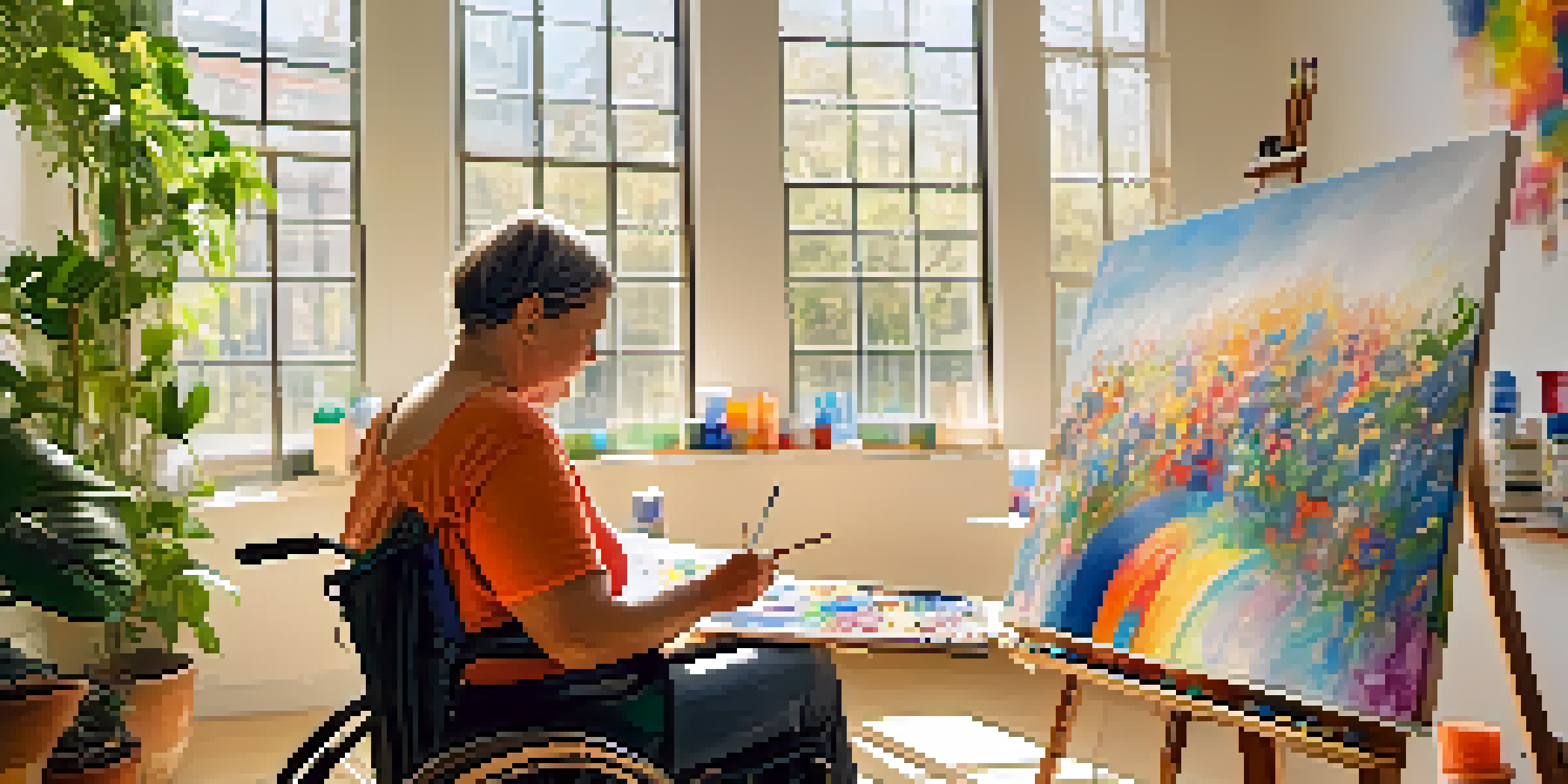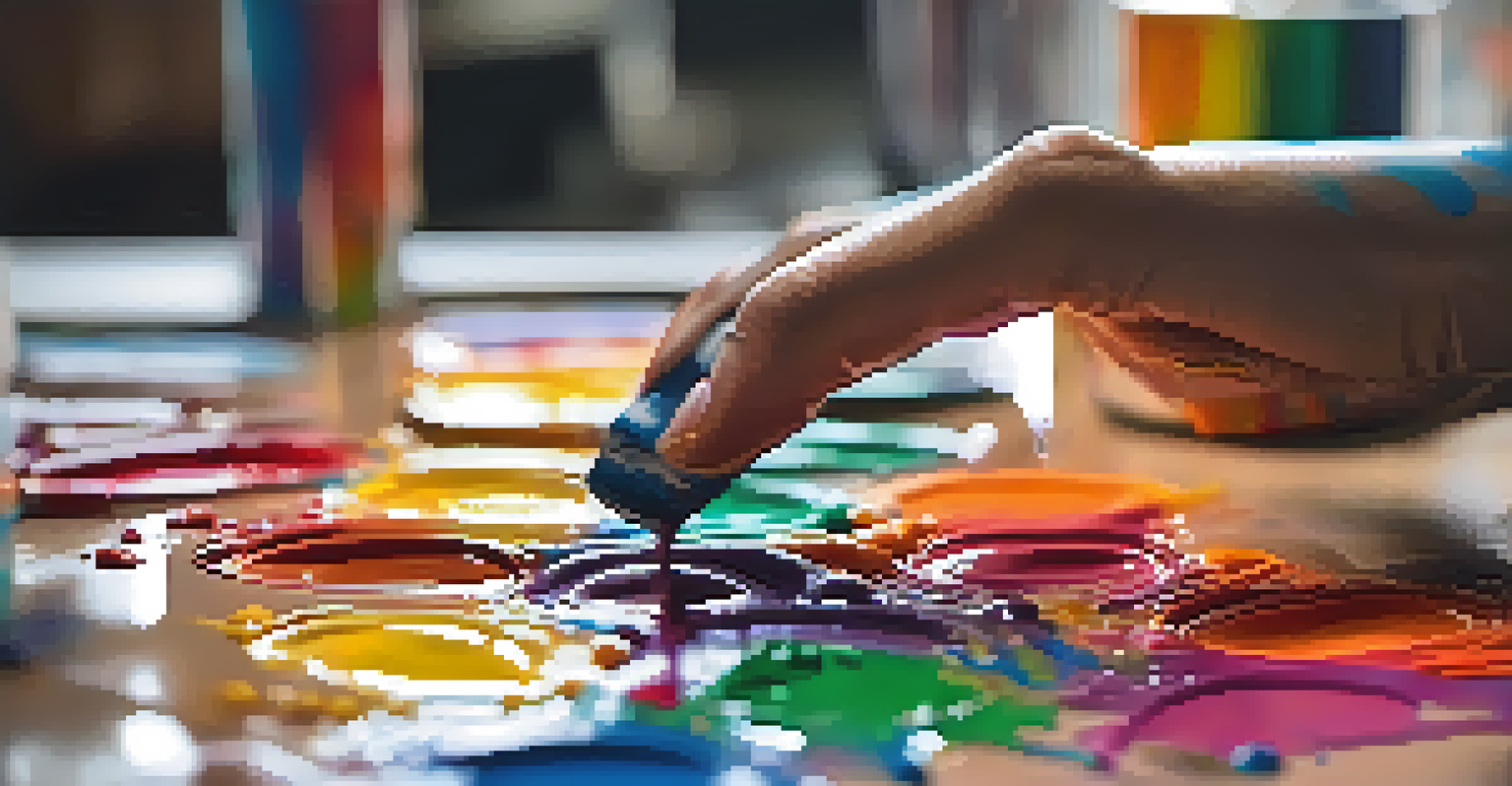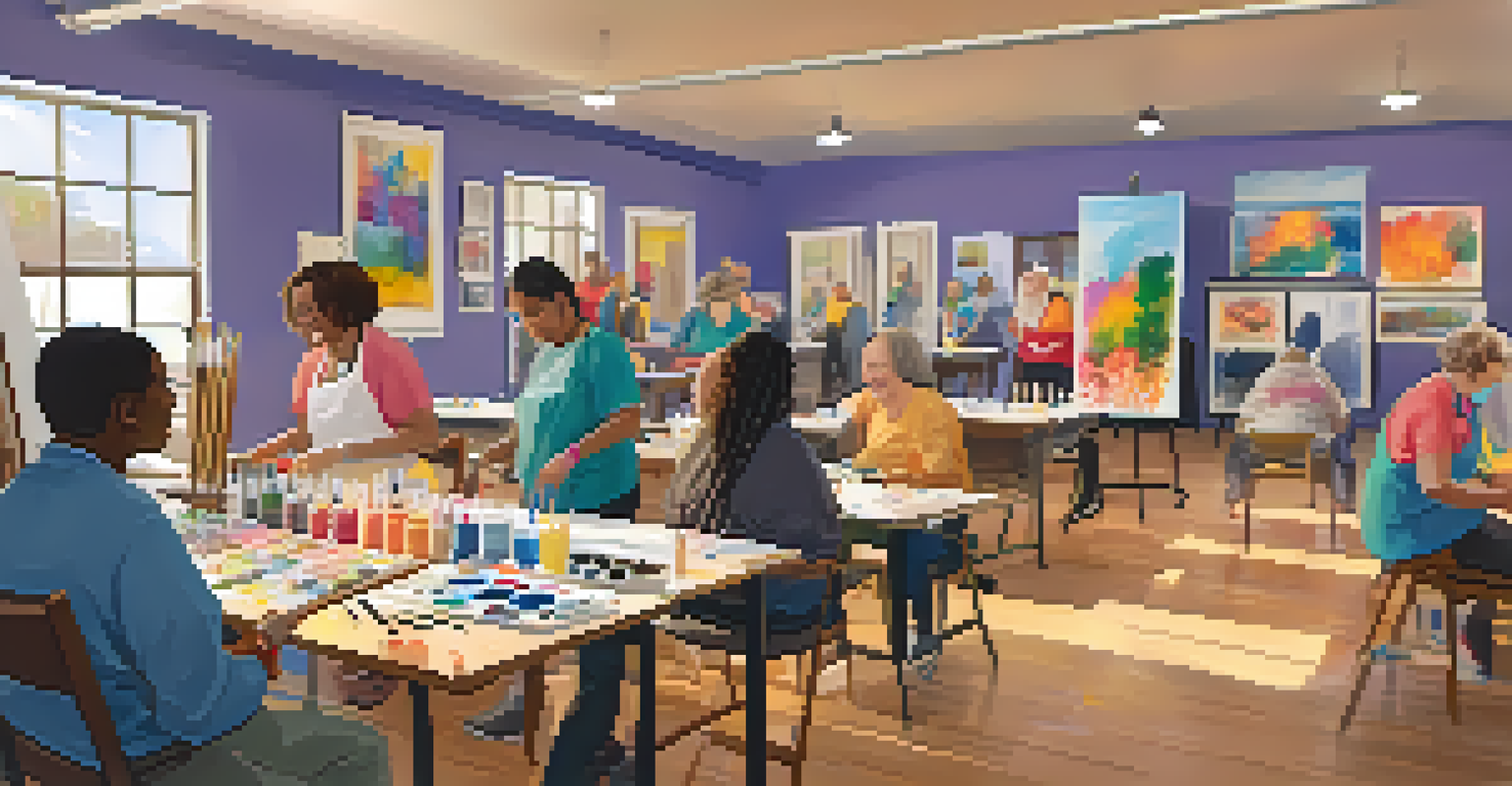Painting as a Healing Tool for Individuals with Disabilities

Understanding the Connection Between Art and Healing
Art therapy has gained recognition as a powerful method for healing, particularly for individuals with disabilities. Painting allows for self-expression that transcends verbal communication, making it an ideal medium for those who may struggle with traditional forms of expression. The act of creating art can also stimulate emotional release, helping individuals process their feelings and experiences.
Art enables us to find ourselves and lose ourselves at the same time.
For many, the canvas becomes a safe space where they can explore their emotions without judgment. This liberating experience often fosters a sense of control and autonomy, which can be especially beneficial for people with disabilities who may feel limited in other areas of their lives. Ultimately, painting serves as a bridge to emotional well-being, encouraging personal growth and healing.
Moreover, engaging in artistic activities like painting has been shown to reduce symptoms of anxiety and depression. The focus and concentration required in the creative process can act as a form of mindfulness, diverting attention from negative thoughts. In this way, painting not only promotes healing but also enhances overall mental health.
The Therapeutic Benefits of Painting
Painting offers a myriad of therapeutic benefits that cater to emotional, psychological, and even physical wellness. For instance, the simple act of mixing colors and applying paint can enhance fine motor skills, which is particularly helpful for individuals with physical disabilities. As they engage their hands and fingers in creative expression, they simultaneously improve their dexterity and coordination.

Beyond physical benefits, painting provides an emotional outlet that many individuals desperately need. The vibrant colors and textures allow for a unique exploration of feelings, often leading to breakthroughs in understanding personal challenges. This process can be incredibly cathartic, enabling individuals to confront emotions that might have been buried for a long time.
Art Therapy Promotes Emotional Healing
Engaging in painting allows individuals to express emotions and foster personal growth, providing a therapeutic outlet for healing.
Additionally, painting can foster social connections, especially when practiced in group settings. Workshops and community art classes provide opportunities for individuals to bond over shared experiences, cultivating a sense of belonging. These connections can significantly enhance the healing process, offering support and encouragement in a collaborative environment.
Creating a Supportive Environment for Art
A supportive environment is crucial for individuals with disabilities to fully engage in painting as a healing tool. This means providing accessible spaces, materials, and encouragement that cater to diverse needs. By ensuring that art supplies are easy to use and that the physical space is accommodating, facilitators can create an inviting atmosphere that inspires creativity.
Every artist dips his brush in his own soul, and paints his own nature into his pictures.
Moreover, fostering a sense of safety and acceptance is essential. Individuals must feel comfortable expressing themselves without fear of criticism or judgment. Art therapists and instructors play a pivotal role in nurturing this environment, guiding participants while allowing them the freedom to explore their creativity at their own pace.
Creating a supportive atmosphere also involves celebrating each individual's unique artistic expression. Acknowledging and validating the artwork produced fosters self-esteem and confidence, reinforcing the idea that everyone’s creative voice is valuable. This affirmation can have a profound impact on the healing journey.
Exploring Different Painting Techniques
There are numerous painting techniques that can be utilized, each offering unique benefits. For instance, watercolor painting can be particularly soothing due to its fluid nature, allowing individuals to create soft blends and gentle transitions. This technique can help reduce stress and promote a sense of calm, making it an excellent choice for therapeutic settings.
On the other hand, acrylic painting is vibrant and versatile, allowing for bold expressions and experimentation. The quick-drying nature of acrylics enables fast layering, which can be satisfying for individuals who thrive on immediate results. This instant gratification can enhance motivation and encourage continued exploration of artistic skills.
Painting Enhances Social Connections
Participating in group art activities fosters a sense of belonging and support, significantly enhancing the healing process.
Finally, mixed media approaches can integrate various materials, such as collage or textiles, into the painting process. This technique not only invites creativity but also allows for tactile engagement, which can be particularly beneficial for individuals with sensory processing challenges. By exploring different techniques, individuals can discover what resonates with them, fostering a deeper connection to their art.
Case Studies: Success Stories in Art Therapy
Numerous case studies highlight the transformative power of painting in the lives of individuals with disabilities. For example, a young woman with autism found solace in painting after struggling to communicate her feelings verbally. Through her artwork, she was able to express her emotions and connect with others, showcasing the profound impact art can have on personal expression.
Another inspiring case involves a veteran with PTSD who turned to painting as a form of therapy. By channeling his experiences onto the canvas, he not only processed his trauma but also discovered a newfound passion for art. His journey illustrates how painting can serve as a tool for healing, helping individuals reclaim their narratives and foster resilience.
These success stories are just a few examples of how painting can empower individuals with disabilities. Each narrative underscores the importance of creative expression in the healing process, highlighting the diverse ways art can positively influence mental and emotional health.
Incorporating Painting into Daily Life
Incorporating painting into daily routines can further enhance its healing benefits. Setting aside time for creative expression, whether through scheduled art sessions or spontaneous painting, allows individuals to prioritize their mental health. Even a few minutes spent on a canvas can serve as a powerful reset, providing a break from daily stressors.
Additionally, using art as a means of reflection can deepen the healing experience. Keeping a painting journal, where individuals document their thoughts and feelings alongside their artwork, can provide valuable insights into their emotional journey. This practice not only tracks progress but also encourages self-awareness and mindfulness.
Diverse Techniques Offer Unique Benefits
Exploring various painting techniques, such as watercolor and mixed media, provides individuals with unique ways to connect with their creativity and promote mental well-being.
Lastly, sharing artwork with friends or family can enhance social connections and foster support. Whether through exhibitions or informal gatherings, showcasing creative work creates opportunities for dialogue and connection. This shared experience can amplify the healing impact of painting, reinforcing the idea that art can bring people together.
Future Directions in Art Therapy for Disabilities
The future of art therapy, particularly painting, holds great promise for individuals with disabilities. As awareness of the therapeutic benefits of art continues to grow, more programs and resources will become available. Innovations in technology, such as virtual art classes and online therapy sessions, will also make art more accessible to a wider audience.
Furthermore, integrating painting with other therapeutic modalities, such as music or movement, can create holistic approaches to healing. These combined therapies can address multiple facets of well-being, enhancing the overall impact on mental health. Collaborations among art therapists, healthcare providers, and community organizations will be vital in advancing these initiatives.

Ultimately, the goal is to create inclusive environments where individuals with disabilities can thrive creatively. By championing the significance of painting as a healing tool, we can foster a culture that values artistic expression and its potential to transform lives. The journey of healing through art continues to evolve, promising brighter futures for many.